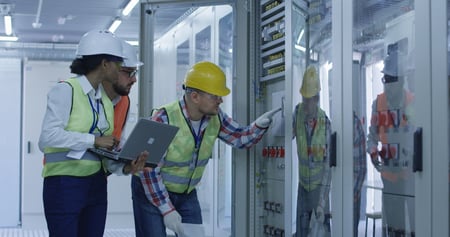 There’s a reason they don’t call critical power “optional power.” It’s the last line of defense, keeping essential operations and data up and running. If your system fails, it’s not just a failure for you, personally. It can cause massive repercussions for your company.
There’s a reason they don’t call critical power “optional power.” It’s the last line of defense, keeping essential operations and data up and running. If your system fails, it’s not just a failure for you, personally. It can cause massive repercussions for your company.
Depending on your business, data can disappear forever, financial transfers go down, and in the case of oil platforms and medical facilities, people’s lives can be endangered. But no pressure, right?
Add a pandemic into the mix, making any tolerance for error even slimmer, and we understand why you might be having some sleepless nights. (Don’t miss our recent blog, 5 Critical Power Lessons from the Pandemic, for some insights.)
In short, most people right now are worried about keeping their jobs. If you oversee critical power, you’re likely even more worried than most because you know how many things can go wrong.
Many of those things that can go awry will occur due to bad design. Don’t get us wrong--of course, other things, like installation and maintenance, matter too. But if you aren’t starting with a strong critical power system design, you’re already behind.
Why design matters
At Concentric, we design many systems from the ground up, but we also have customers who come to us for help with issues. Much of the time, those problems result from a system that wasn’t designed and installed properly.
Your critical power system should be designed for your company’s specific needs. That means your partner needs to completely understand those needs. If they don’t, you’ll run into issues that might complicate your business and endanger your job.
What to consider when designing a critical power system
Here are some things to consider when designing an effective system that can help you do your job better, instead of endangering it.
1. Data-based design - Your partner should conduct an on-site power assessment to gather data on the demands on your current system. After that, the data should be carefully analyzed.
2. Engineered design - That data should be the basis of a proposed design created by engineers. Ideally, you should receive more than one design proposal to consider. Make sure your partner has the engineering knowledge and experience you need, to help you invest in the best valued, high reliability solution for your operation.
3. Collaborative decision-making - Your engineering partner should be willing to (patiently!) discuss the proposed designs with you and your team to ensure the final design meets every business requirement. Otherwise, you may be updating your resume...
4. Understanding of total cost - The lowest price isn’t always the cheapest. Make sure both you and your partner understand total cost and how each system option will affect your department’s budget. Your partner should equip you with the knowledge you need to confidently discuss your spend with company executives.
5. Comprehensive documentation - Everything about the design should be documented in case you run into issues later. Companies often come to us for help with poorly documented systems. It certainly won’t help your job situation if you find it hard to wrap your head around what you’re working with (even if the lack is no fault of your own!)
6. Documented installation capabilities - The company that creates your design should also have the ability to install it. This eliminates any potential confusion about the design. While this is always important, it’s become even more crucial in the pandemic, as companies attempt to reduce the number of contacts. And be sure that the partner has a reputation for high-quality installations! We’ve seen a number of lower-quality installations go awry during the pandemic, as fewer employees are on-site to monitor for issues.
7. Safety considerations - When you’re putting together your battery room, you must consider safety when it comes to the storage and maintenance of your backup battery systems and other critical equipment. It’s important for maintaining power, but it’s also crucial for keeping the company safe from any legal issues resulting from hazards. Your job could be endangered by a safety issue happening with an employee or contractor, so be sure you protect yourself, in more ways than one.
Choosing a critical power partner is an important decision for your company, but it’s also a decision that can make or break your career. After all, if your critical power system is problematic, you’ll spend more time putting out fires than prioritizing other work that can better advance your career. And if a problematic outage occurs, your career could screech to a halt. That’s why it’s a decision that’s often more important than people realize.
If you’d like tips for how to select a critical power partner, check out our recent blog.



